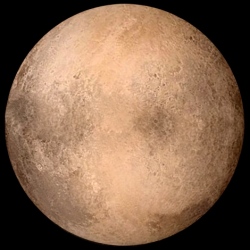
GJ 1132b, an extrasolar planet about 1.2 times the size and 1.6 times the mass of the Earth, intrigued astronomers when it was discovered last year. Also known as Gliese 1132b, the planet orbits the red dwarf star GJ 1132, which is only 1/5 the size of our Sun and is cooler and much fainter than the sun.
Located 39 light-years from Earth, GJ 1132b circles its star every 1.6 days at a distance of 1.4 million miles. The planet might have an atmosphere despite being baked to a temperature of around 450 degrees Fahrenheit (232 degrees Celsius). But would that atmosphere be thick and soupy or thin and wispy?
New research, led by Harvard-Smithsonian Center for Astrophysics’ Laura Schaefer, suggests the latter is much more likely. Dr. Schaefer and co-authors examined the question of what would happen to GJ 1132b over time if it began with a water-rich atmosphere.
Orbiting so close to its host star, the exoplanet is flooded with UV light (which breaks apart water molecules into hydrogen and oxygen, both of which then can be lost into space). However, since hydrogen is lighter it escapes more readily, while oxygen lingers behind.
“On cooler planets, oxygen could be a sign of alien life and habitability,” Dr. Schaefer said.
“But on a hot planet like GJ 1132b, it’s a sign of the exact opposite – a planet that’s being baked and sterilized.”
Since water vapor is a greenhouse gas, GJ 1132b would have a strong greenhouse effect, amplifying the star’s already intense heat. As a result, its surface could stay molten for millions of years.
A ‘magma ocean’ would interact with the atmosphere, absorbing some of the oxygen, but how much? Only about 1/10, according to the model created by the team. Most of the remaining 90% of leftover oxygen streams off into space, however some might linger.
“This planet might be the first time we detect oxygen on a rocky planet outside the Solar System,” said co-author Dr. Robin Wordsworth, from Harvard Paulson School of Engineering and Applied Sciences.
If any oxygen does still cling to GJ 1132b, next-generation space telescopes may be able to detect and analyze it.
The magma ocean-atmosphere model could help astronomers solve the puzzle of how Venus evolved over time.
Venus probably began with Earthlike amounts of water, which would have been broken apart by sunlight. Yet it shows few signs of lingering oxygen. The missing oxygen problem continues to baffle astronomers.
